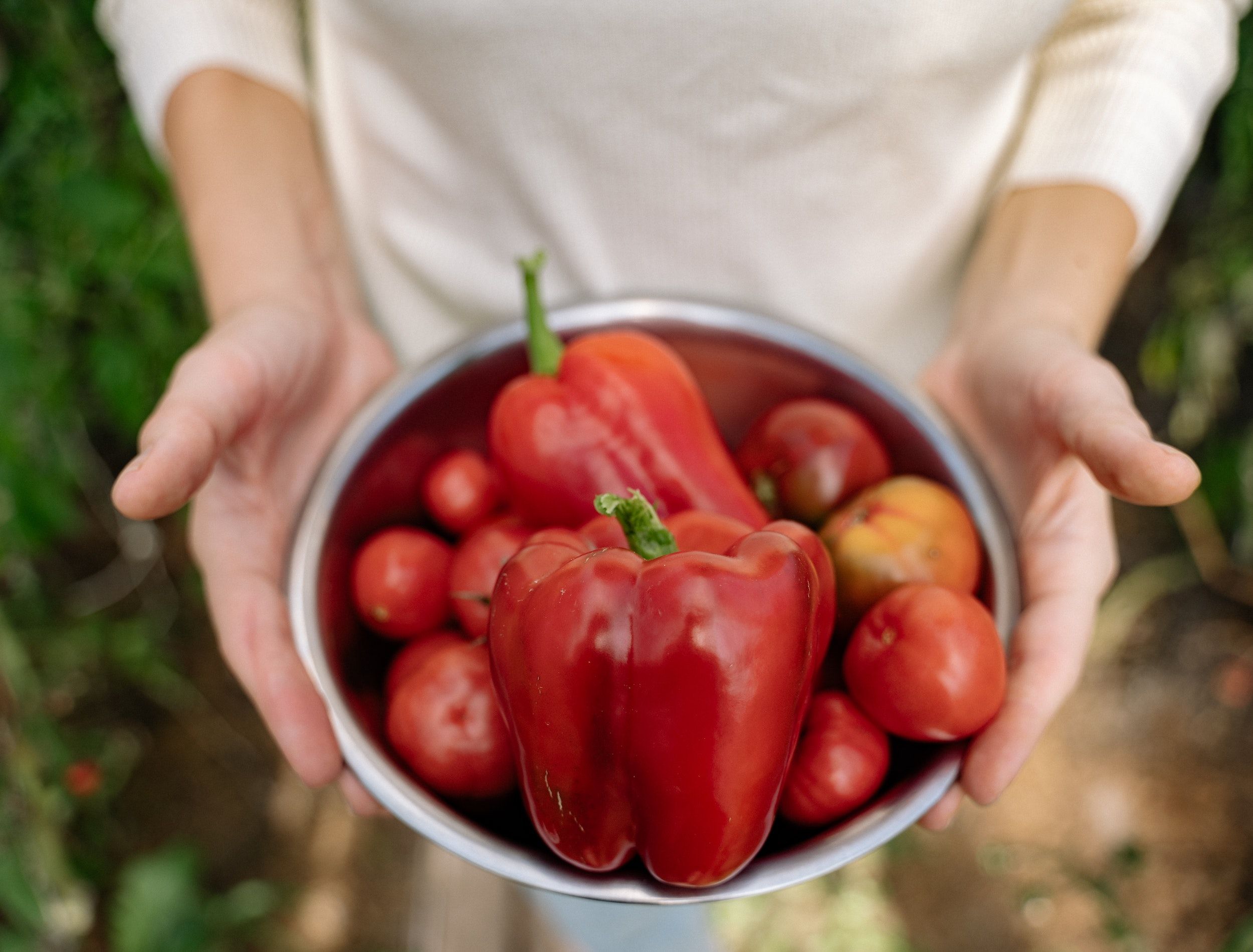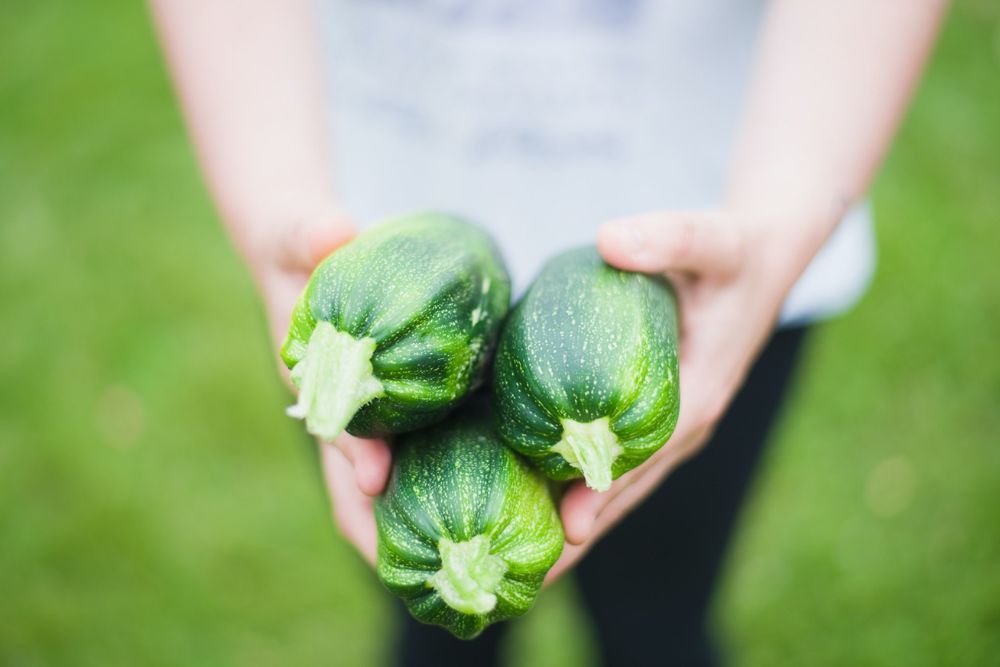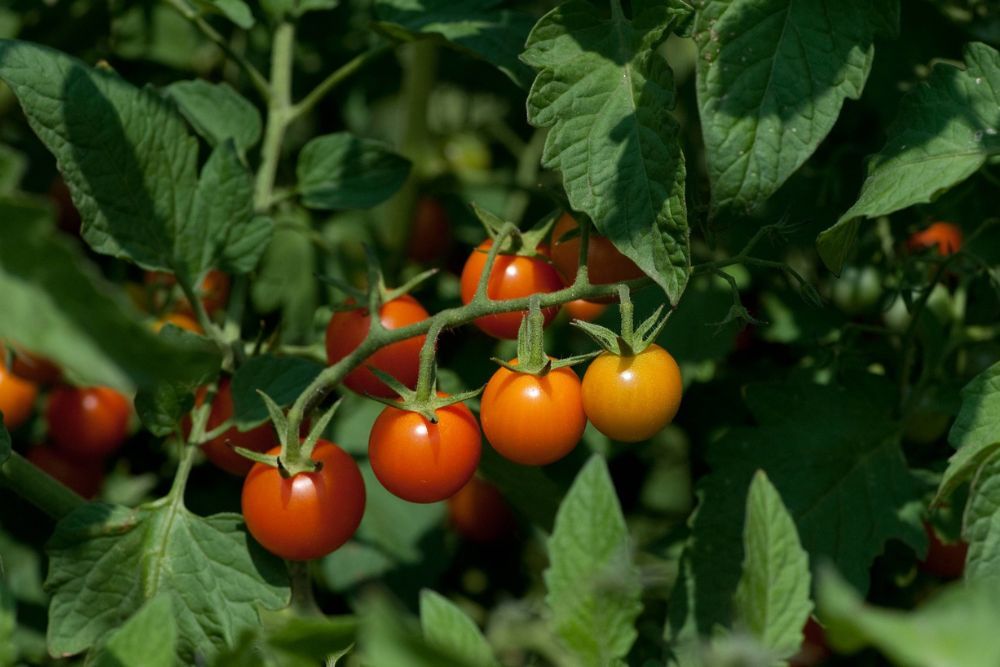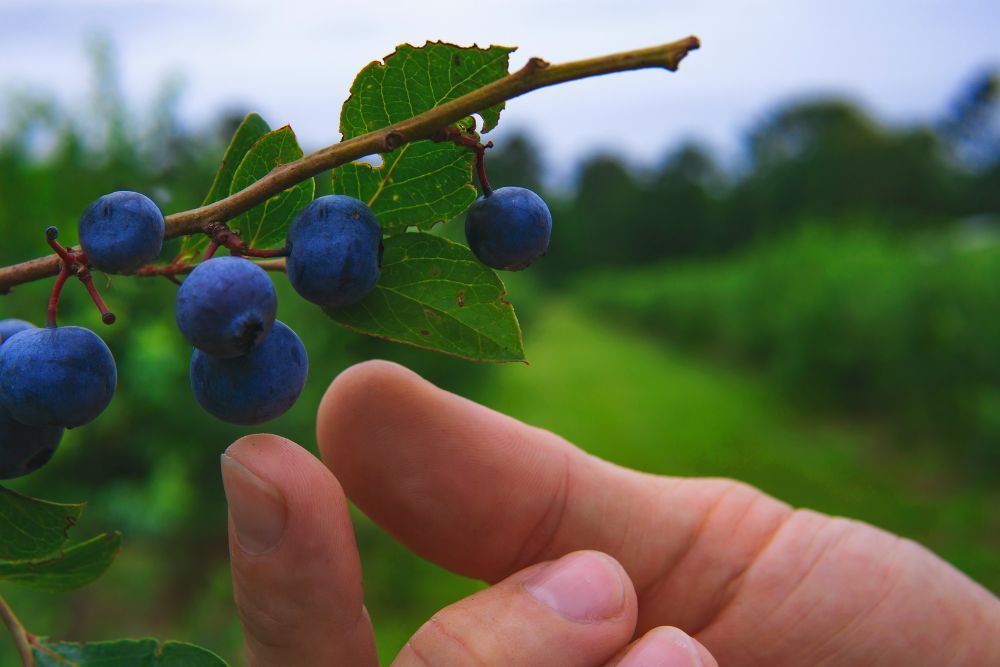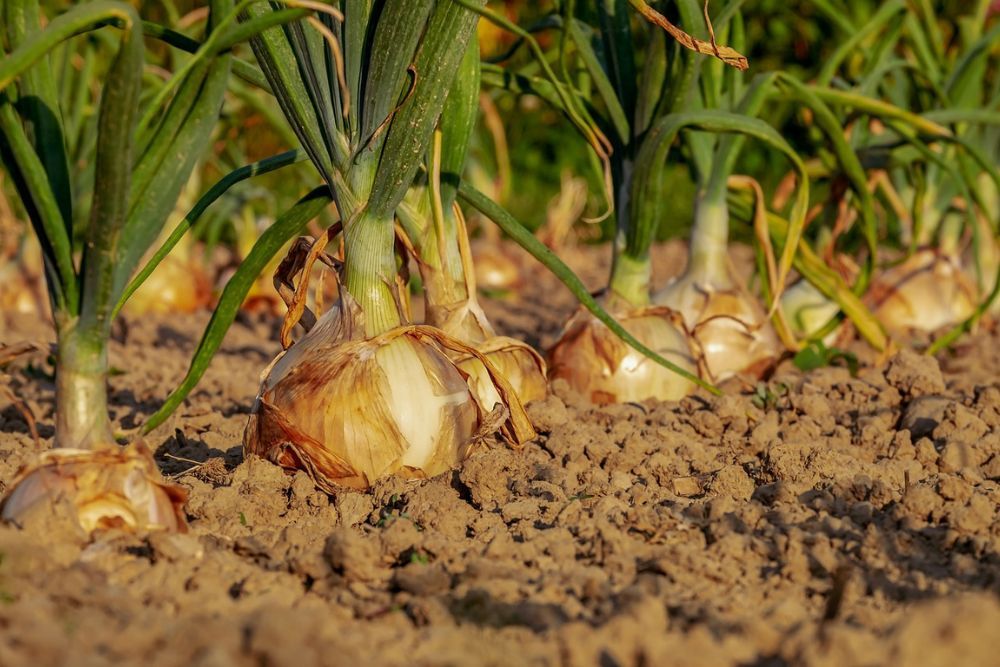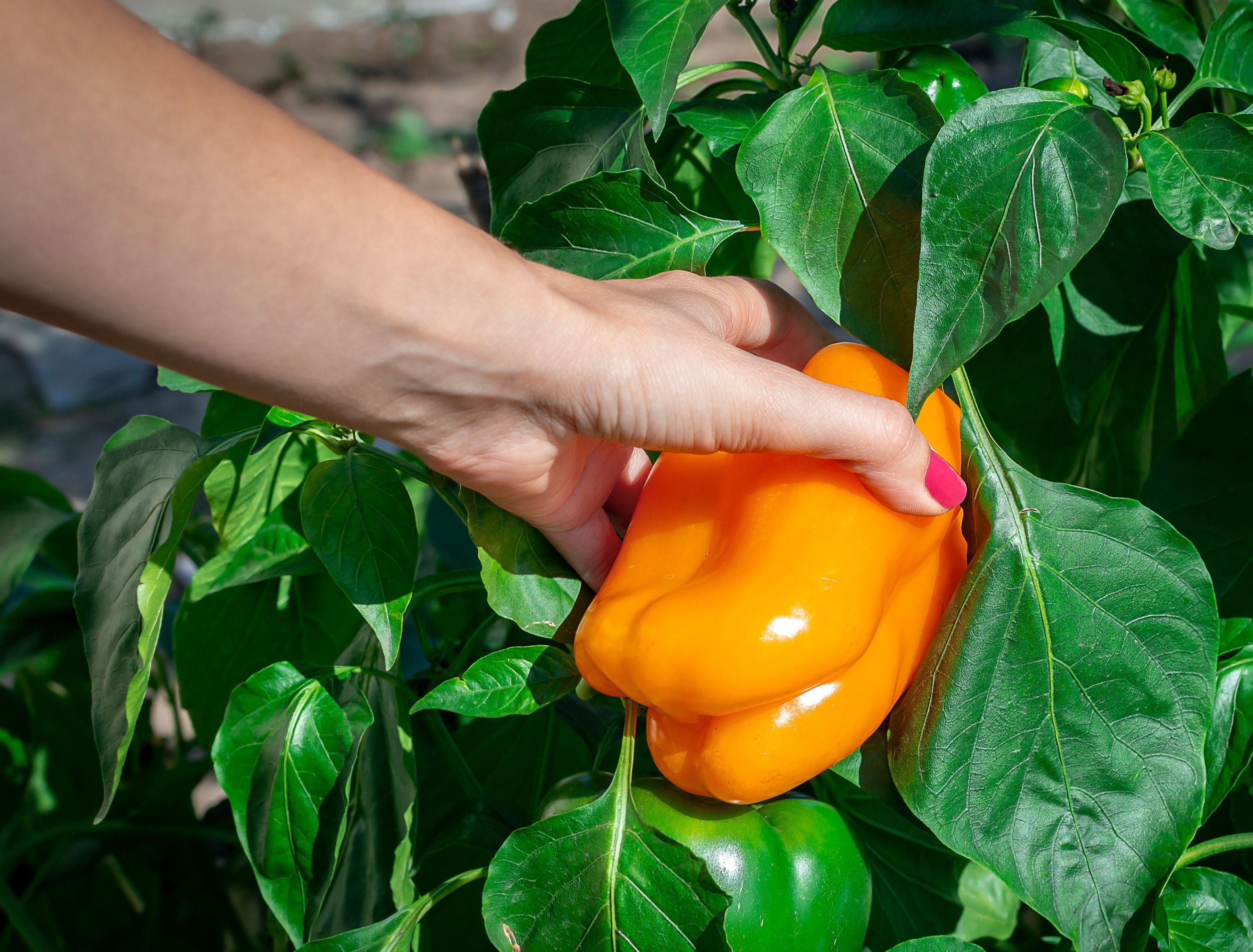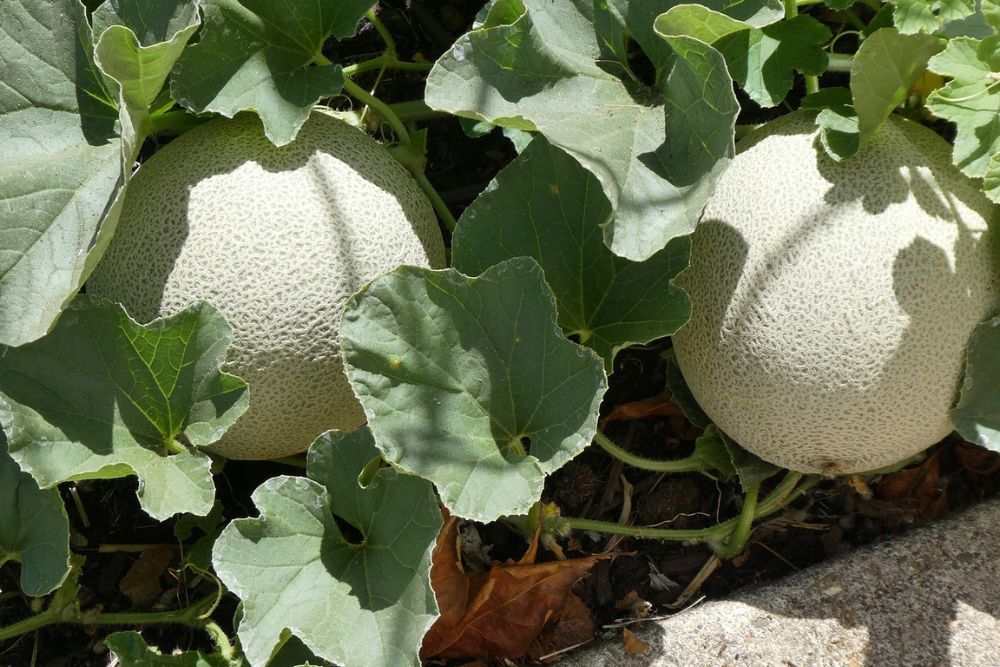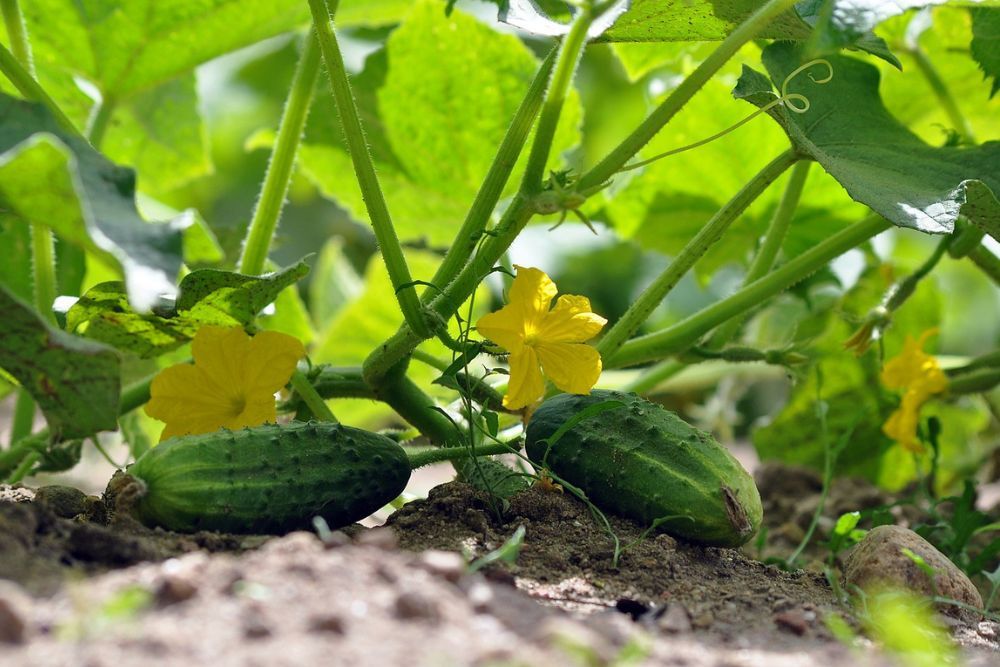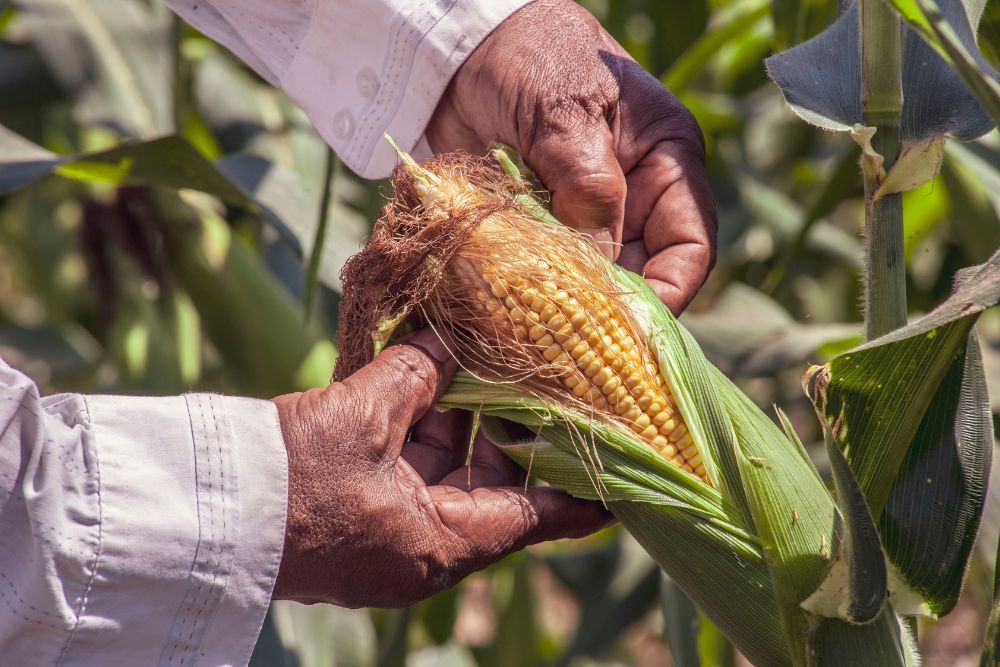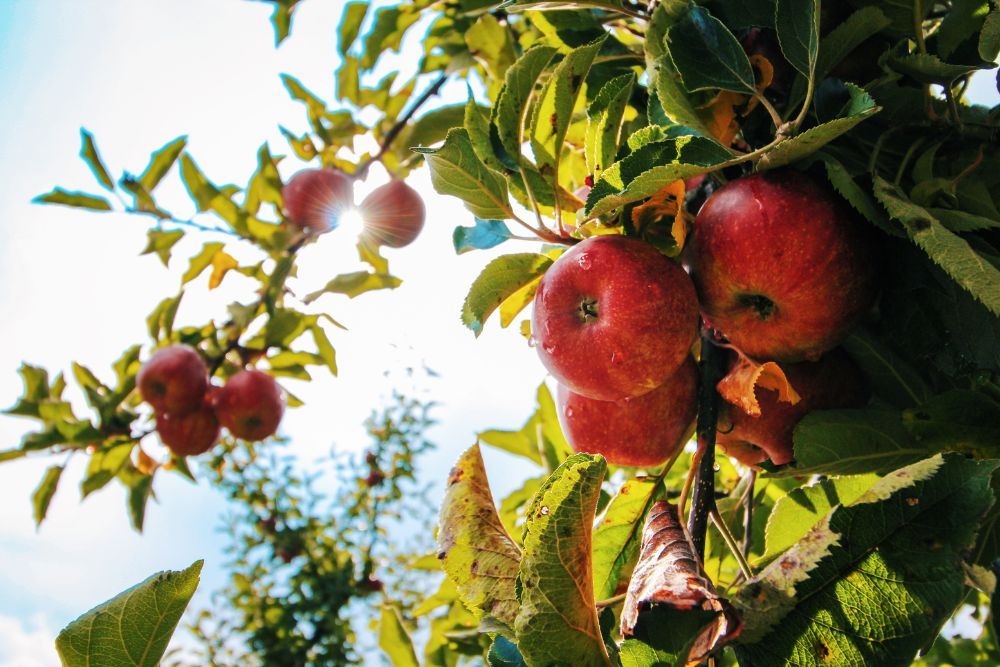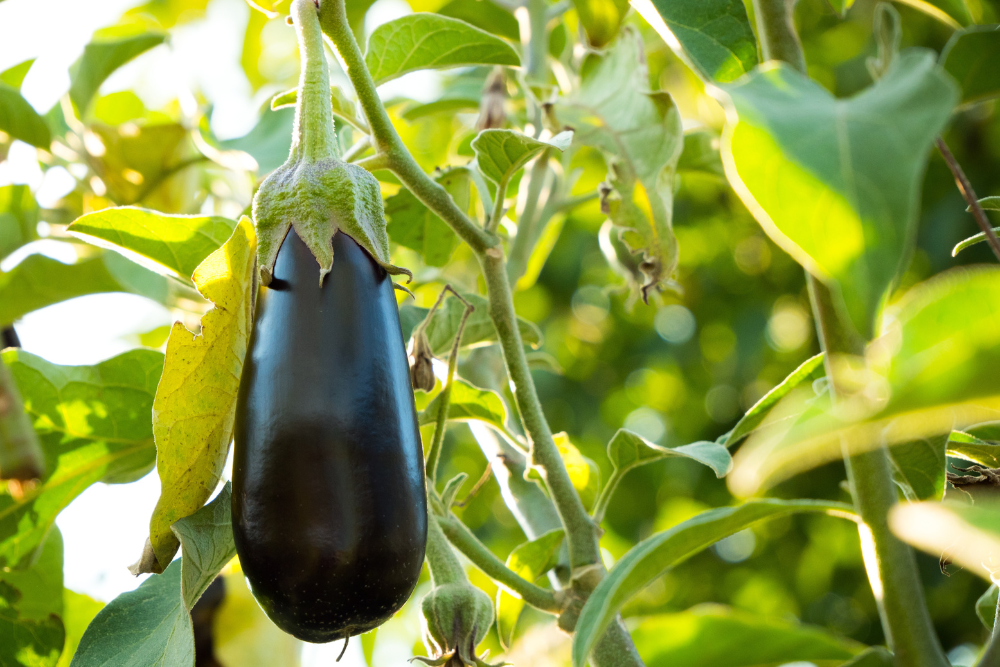August brings a flurry of activity as fruits and vegetables ripen. After tending your garden by watering plants, fertilizing the soil, and even helping it beat sizzling heatwaves, you can reap the rewards! Whether you plan to eat it fresh or store it for later, when you gather it on time you can relish a high-quality harvest.
Discover 10 types of fruits and vegetables that are ready to pick in August, so you don't miss out. Plus learn handy tips to make gathering your bumper crop a breeze. Once you're done, you can even share extra fruits and vegetables with friends and family!
1. Summer Squash
Summer squash includes a range of crisp and refreshing vegetables such as vibrant green zucchinis, golden yellow straightneck squash, and scallop (pattypan) squash. Summer squash grows quickly and is ready to harvest about 55 days after you sow seeds. If you plant squash in June when temperatures reach 65 to 75 degrees Fahrenheit, you can pick it in August. As a general rule, harvest zucchini at 7 to 8 inches long, straightneck squash at a diameter of 1½ to 2 inches, and scallop squash when it's 3 or 4 inches across.
Harvesting Tips: Wear gloves because summer squash vines are prickly. Then, cut summer squash off the vine with a knife, keeping 1 inch of the stem attached to the squash.
Fruits and vegetables have a myriad of cultivars that may have unique harvesting timeframes and guidelines. Always check your seed packet for specific information.
2. Tomatoes
Tomatoes take 52 to 90 days to grow. So, if you want to harvest tomatoes in August, start tomato seeds indoors about six to eight weeks before you get the last spring frost in your area. Then, transplant tomatoes outside around June, when temperatures are optimal for growing, between 70 and 80 degrees Fahrenheit.
Harvesting Tips: Gently twist tomatoes to remove them from the plant when the fruit has its ripe color (red, yellow, or orange depending on the cultivar) and feels firm to the touch.
If you didn't start your tomatoes indoors, choose a cultivar that grows quickly, so you can enjoy an August harvest. 'Sun Gold' yellow cherry tomatoes, 'Matt's Wild Cherry,' and 'Early Girl' are ready in 60 days or less.
3. Blueberries
Blueberries are a sweet summer treat. Depending on where you are in the United States, their harvest season spans April to September. For example, in Minnesota, July kicks off blueberry harvesting while in New Hampshire the height of the blueberry season is in August.
After planting a blueberry bush, you'll only see a few berries in the first three years. Usually, it takes five years for the bush to produce a large amount. Encourage a larger yield and bigger berries by planting two or more blueberry cultivars like sweet-tasting 'Bluecrop' or large 'Northblue,' so they cross-pollinate.
Harvesting Tips: Pick blueberries by hand to carefully detach them from the branches when they have a rich blue hue and feel springy when you lightly squeeze the berry. Another method is to tickle them off, by resting a group of berries attached to a branch in your palm. Gently run your fingertips over them. If they're ripe they'll easily come off, so you can collect them.
4. Onions
Cultivating onions takes three to four months. You can grow them from seed or an onion set which is a little onion bulb. Sow seeds like 'Early Yellow Globe,' ½ inch deep, inside, about 6 weeks before the soil outside is 50 degrees Fahrenheit and warm enough for transplanting. Alternatively, plant onion sets like 'Sweet Sandwhich' in spring, when it's above 28 degrees Fahrenheit, and you can work the soil 1 to 2 inches deep. For an August harvest start seeds in February and transplant in May, or plant onion sets in April.
Harvesting Tips: When onion greens wilt it's harvest time! Grasp the tops (greens) to lift bulbs out of the ground. Then, cut off the tops leaving 1 inch of greens above the onion bulb.
5. Peppers
Bell pepper and hot peppers grow well in balmy summer weather when it's about 70 to 85 degrees Fahrenheit outside. Pepper varieties usually take around 100 to 120 days (three to four months) to grow from seed or 70 to 85 days when you cultivate pepper transplants. If you want to harvest peppers in August, start seeds indoors six to eight weeks before the last spring frost and then transplant them in May if it's above 70 degrees Fahrenheit.
Harvesting Tips: Wear gloves (for hot peppers) and use a sharp knife or pruning shears to cut the pepper stem when it feels firm, and it's the correct ripe shade (green 'Jalapeno M', red 'Carolina Cayenne', or yellow 'Sunbright Yellow Bell')
Three to four months is an average guideline and there are exceptions, so always check your cultivar for specifics. For instance, hot peppers typically need more time and can take up to 150 days to grow.
6. Cantaloupe
Cantaloupe is a mouthwatering fruit perfect for summer fruit salads. For best results, plant varieties with a short growing season, like 'Goddess' which grows in 68 days, or 'Accolade' and 'Atlantis' which mature in 74 days. Sow seeds in May or June when the soil is 65 degrees Fahrenheit, so you can enjoy cantaloupe in mid to late August.
Harvesting Tips: Cantaloupe melons are ripe 35 to 45 days after you see flowers. Twist the melon off the vine when the skin is yellow and feels rough, and the stem browns.
7. Cucumbers
Watch for ripe cucumbers 50 to 70 days after sowing cucumber seeds. Maturity varies by cultivar, 'Bush Crop' takes 55 days, and 'Bush Pickle' is ready in just 48 days, while 'Sweet Slice' grows over 63 days. Direct sow your seeds when the soil is at least 50 degrees Fahrenheit but ideally 70 degrees Fahrenheit, in late May or June for an August harvest.
Harvesting Tips: Use pruning shears to cut them off the vine when they are at least 2 inches long (depending on the cultivar).
8. Sweet Corn
Sweet corn matures in 80 to 95 days, however, some cultivars grow faster. Prepare for an August harvest by planting sweet corn cultivars like 'Seneca' that grows in 64 days, or 'Ambrosia' that's ready in 75 days. Sow seeds once the soil is 60 to 95 degrees Fahrenheit, no later than May for a bite of sweet corn on the cob in mid to late August.
Harvesting Tips: Watch for silks which are fibers that look like threads. They form around the corn cob, underneath the green husk. You can usually see them poking out at the top of the 'ear' or cob of corn. After they show up you can often gather sweet corn 20 days later. Harvest when the silks brown and dry out by twisting and pulling the ear off the plant in a downward motion.
9. Apples
When August arrives you can also harvest certain cultivars of apples on trees. 'Ginger Gold,' 'Gala,' and 'Mollie's Delicious' usually ripen from late July into August. When cultivating a new tree you need patience. They take anywhere from two to eight years to bear fruit. Research your cultivar carefully before planting, if you want to bite into a fresh apple sooner.
Harvesting Tips: Gather apples by hand by holding and twisting the fruit away from the branch when you see a green-yellow coloring at the base (the background) of the apple.
10. Eggplant
Eggplants can take 65 to 80 days when you cultivate transplants or 100 to 120 days to grow from seed, depending on your cultivar. They prefer warm temperatures of 70 to 85 degrees Fahrenheit. If you are planting close to August choose varieties that mature fast like 'Santana' a white eggplant that's ready in 80 days, or purple 'Epic' eggplants that grow in 64 days. For eggplants in August, pick a quick cultivar and start growing in June at the latest.
Harvesting Tips: Test your eggplant for ripeness by placing your fingernail against the skin. If you dent it, and it stays, harvest it by using a knife to detach it from the plant, 1 inch above the eggplant.
Savor the Fruits (and Vegetables) of Your Labor
It takes patience and dedication to produce a bumper crop of fruits and vegetables in your garden. However, when August arrives, and you start harvesting delicious, mouthwatering produce like summer squash, blueberries, and apples it's all worth it! Just remember to follow custom tips for your cultivar to carefully collect your harvest.
What fruits and vegetables do you look forward to harvesting in August? Share your top picks in the comments below!

